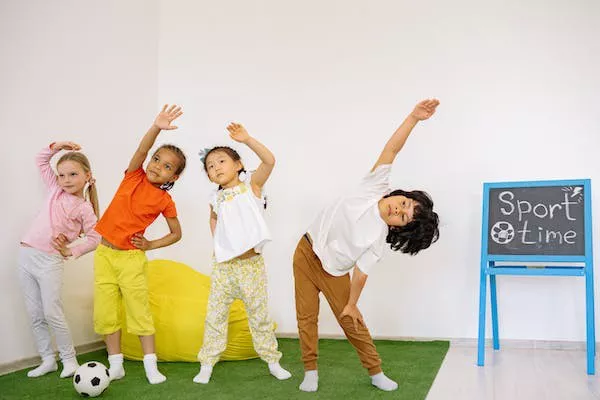The journey of parenting is a multifaceted adventure, marked by countless decisions aimed at nurturing a child’s development. One area that has sparked debates and discussions among parents and experts alike is the use of baby gear, particularly Jumperoos, and its potential impact on the crucial developmental milestone of walking. In this article, we will delve into the mechanics of Jumperoos, explore expert opinions, scrutinize existing research, and consider various factors to gain a comprehensive understanding of whether Jumperoos have the potential to delay infant walking.
The Mechanics of Jumperoos:
Jumperoos, also known as baby jumpers or activity centers, are designed to provide infants with an interactive and entertaining space. These devices typically consist of a suspended seat attached to an elastic strap or springs, allowing the baby to bounce up and down. Equipped with colorful toys, lights, and sounds, Jumperoos aim to engage and stimulate infants during playtime.
The rationale behind Jumperoos is to facilitate motor skill development, with the bouncing motion intended to strengthen leg muscles and enhance coordination. However, as parents seek to provide the best for their children, concerns have arisen regarding the potential impact of Jumperoos on walking development.
Expert Perspectives on Jumperoos and Walking Development:
The opinions of experts, including pediatricians and physical therapists, on the relationship between Jumperoos and walking development vary. Some professionals advocate for the potential benefits of these devices in building leg strength and coordination, which could theoretically contribute to earlier walking. On the other hand, there are skeptics who express reservations about the prolonged use of Jumperoos.
One concern raised by skeptics is the possibility that the repetitive bouncing motion may encourage infants to rely on their toes rather than their entire foot when standing or walking. This concern is rooted in the idea that bouncing in a Jumperoo does not mimic the natural walking motion, potentially hindering the development of proper walking mechanics.
Existing Research on Jumperoos and Walking Milestones:
While there is a plethora of research on infant motor development, specific studies addressing the impact of Jumperoos on walking milestones are limited. Existing research often focuses on broader aspects of motor development, leaving room for varied interpretations and opinions.
Some studies suggest that certain types of baby gear, including Jumperoos, may have a positive impact on motor skills. These studies often highlight improvements in areas such as leg strength and coordination. However, it’s crucial to note that the interpretation of these findings is influenced by factors such as the study’s methodology and the perspectives of the researchers involved.
Factors Influencing the Jumperoo-Walking Equation:
Several factors come into play when considering whether Jumperoos have the potential to delay walking in infants. These factors include:
Introduction Age:
The age at which a child is introduced to a Jumperoo may impact its potential effects on walking development. Early exposure may yield different outcomes compared to late or infrequent use.
Duration and Frequency of Use:
The duration and frequency of Jumperoo use can significantly influence its impact on walking development. Striking a balance between allowing the child to enjoy the device and providing ample floor time for natural movement is crucial.
Individual Developmental Variations:
Every child is unique, with variations in factors such as muscle strength, coordination, and overall development. These individual differences play a significant role in determining the walking timeline.
Practical Tips for Jumperoo Use: Balancing Entertainment and Development:
Parents navigating the realm of Jumperoos and their potential impact on walking development can consider the following practical tips:
Moderation as a Guiding Principle:
Experts often advocate for moderation in the use of baby gear, including Jumperoos. While these devices can be entertaining, they should not be the exclusive source of stimulation and movement for infants.
Incorporating Floor Time:
Providing ample floor time for infants to explore and move naturally is essential. Activities such as tummy time and crawling contribute to overall motor development.
Choosing Age-Appropriate Settings:
Many Jumperoos offer adjustable height settings. Ensuring the device is set at an appropriate height for the child’s age and development stage is crucial.
Consulting with Professionals:
Parents are encouraged to consult with pediatricians or physical therapists for individualized guidance. These professionals can assess the child’s development and provide recommendations based on specific needs.
Common Misconceptions about Jumperoos and Walking Delay:
Several misconceptions surround the relationship between Jumperoos and walking development:
Sole Cause of Delay:
Jumperoos are unlikely to be the sole cause of walking delay. Multiple factors contribute to the complexity of motor development, and attributing it solely to baby gear oversimplifies the issue.
Exclusive Reliance on Baby Gear:
Assuming that the use of baby gear alone, including Jumperoos, is sufficient for motor development oversimplifies the intricate nature of walking milestones. A comprehensive approach involving various activities is crucial.
Encouraging Natural Movement and Motor Development:
Fostering natural movement and motor development in infants involves a holistic approach:
Floor Time and Interactive Play:
Incorporating floor time and interactive play in a child’s routine fosters natural movement and exploration. These activities contribute to the development of motor skills, including walking.
Parent-Child Bonding Through Play:
Engaging in interactive play not only supports motor development but also strengthens the bond between parents and infants. Encouraging natural movements during playtime provides a holistic developmental experience.
Conclusion: Striking a Balance for Optimal Infant Development:
In conclusion, the potential impact of Jumperoos on walking development in infants is a complex and nuanced issue. While there are varying perspectives and limited specific research on the topic, a balanced approach that considers factors such as introduction age, duration of use, and individual developmental variations is crucial.
Parents are encouraged to be mindful of moderation, incorporating floor time for natural movement, and seeking professional guidance when needed. By navigating the complexities of Jumperoo usage with informed decisions and a thoughtful approach


